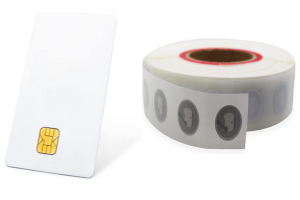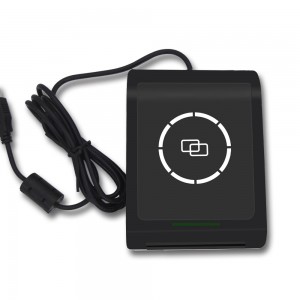Three main technical standard systems for RFID
At present, there are three main technical standard systems for RFID, the Auto-ID Center (Automatic Identification Center) headquartered at the Massachusetts Institute of Technology (MIT) in the United States, the Ubiquitous ID Center (Ubiquitous ID Center, UIC) in Japan, and the ISO standard system.
EPC Global
EPC Global is a non-profit organization established in September 2003 by the Uniform Code Consortium (UCC) and the International Association for Item Numbers (EAN). Its predecessor was the Auto-ID Center, a non-profit organization established on October 1, 1999 at the Massachusetts Institute of Technology in the United States. The Auto-ID Center is committed to creating the Internet of Things and working with numerous member companies to develop a unified open technology standard. It has more than 100 retail distribution enterprises in Europe and the United States, including Wal Mart Group and Tesco in the United Kingdom. At the same time, IBM, Microsoft, Philips, Auto IDLab and other companies provide technical research support. At present, EPC Global has established branches in countries such as Canada, Japan, and China, specifically responsible for the allocation and management of EPC code segments in these countries, the formulation of EPC related technical standards, the promotion and application of EPC related technologies in their respective countries, and other related work. The EPC Global IoT architecture consists of EPC encoding, EPC tags and readers, EPC middleware, ONS server, and EPCIS server.
EPC assigns a unique electronic code to an item, which typically has a bit length of 64 or 96 bits and can also be extended to 256 bits. There are different coding formats for different applications, mainly storing enterprise codes, product codes, and serial numbers. The latest GEN2 standard EPC encoding is compatible with multiple encodings. After filtering and fault-tolerant processing of the EPC code read by the EPC middleware, it is input into the enterprise's business system. It is compatible with readers from different manufacturers by defining a universal interface (API) for readers and writers. The ONS server analyzes EPC codes and user requirements to determine which EPCIS server stores information related to EPC codes. The EPCIS server stores and provides various information related to EPC. These pieces of information are typically stored in PML format or can be stored in relational databases.
Ubiquitous ID
The development of electronic tags in Japan began with the real-time embedded system TRON in the mid-1980s. T-Engine is the core architecture among them. Under the leadership of the T-Engine Forum, the ubiquitous ID center was established in March 2003 and received support from the Japanese government's Ministry of Economy, Trade, Industry and Commerce, Ministry of General Affairs, and large enterprises. Currently, it includes heavyweight enterprises such as Microsoft, Sony, Mitsubishi, Hitachi, Xinhua, Toshiba, Sharp, Fujitsu, NTT DoCoMo, KDDI, J-Phone, Itochu, Daiichi Printing, relief printing, Ricoh, etc. The ubiquitous identification technology architecture of the ubiquitous ID center consists of four parts: ubiquitous identification code (uCode), information system server, ubiquitous communicator, and ucode parsing server. UCode uses 128 bit recording information and provides 340 × 1036 encoding space, and can be further expanded to 256, 384, or 512 bits in units of 128 bits. UCode can accommodate the meta coding design of existing coding systems and is compatible with multiple encodings, including JAN, UPC, ISBN, IPv6 addresses, and even phone numbers. UCode tags come in various forms, including barcodes, RF tags, smart cards, active chips, etc. The ubiquitous ID center categorizes labels and establishes 9 different levels of authentication standards. The information system server stores and provides various information related to ucode. The uCode parsing server determines which information system server the uCode related information is stored on. The communication protocols for the uCode parsing server are uCodeRP and eTP, where eTP is a password authentication communication protocol based on eTron (PKI). The ubiquitous communicator mainly consists of IC tags, tag readers and writers, and wireless wide area communication devices. It is used to send the read uCode to the uCode parsing server and obtain relevant information from the information system server.
ISO standard system
The International Organization for Standardization (ISO) and other international standardization bodies such as the International Electrotechnical Commission (IEC) and the International Telecommunication Union (ITU) are the main bodies responsible for formulating RFID international standards. Most RFID standards are developed by technical committees (TC) or sub technical committees (SC) of ISO (or in conjunction with IEC).





















